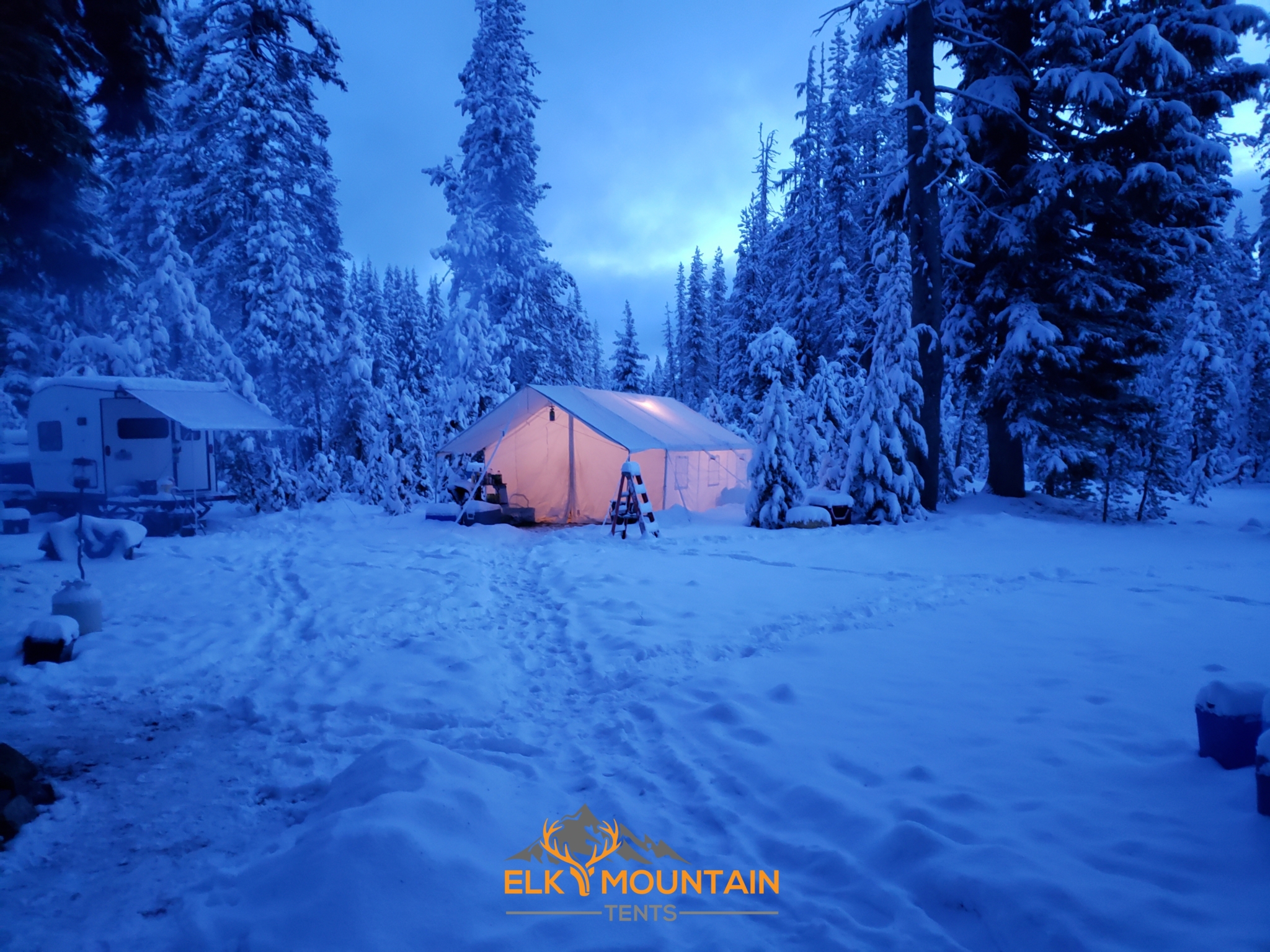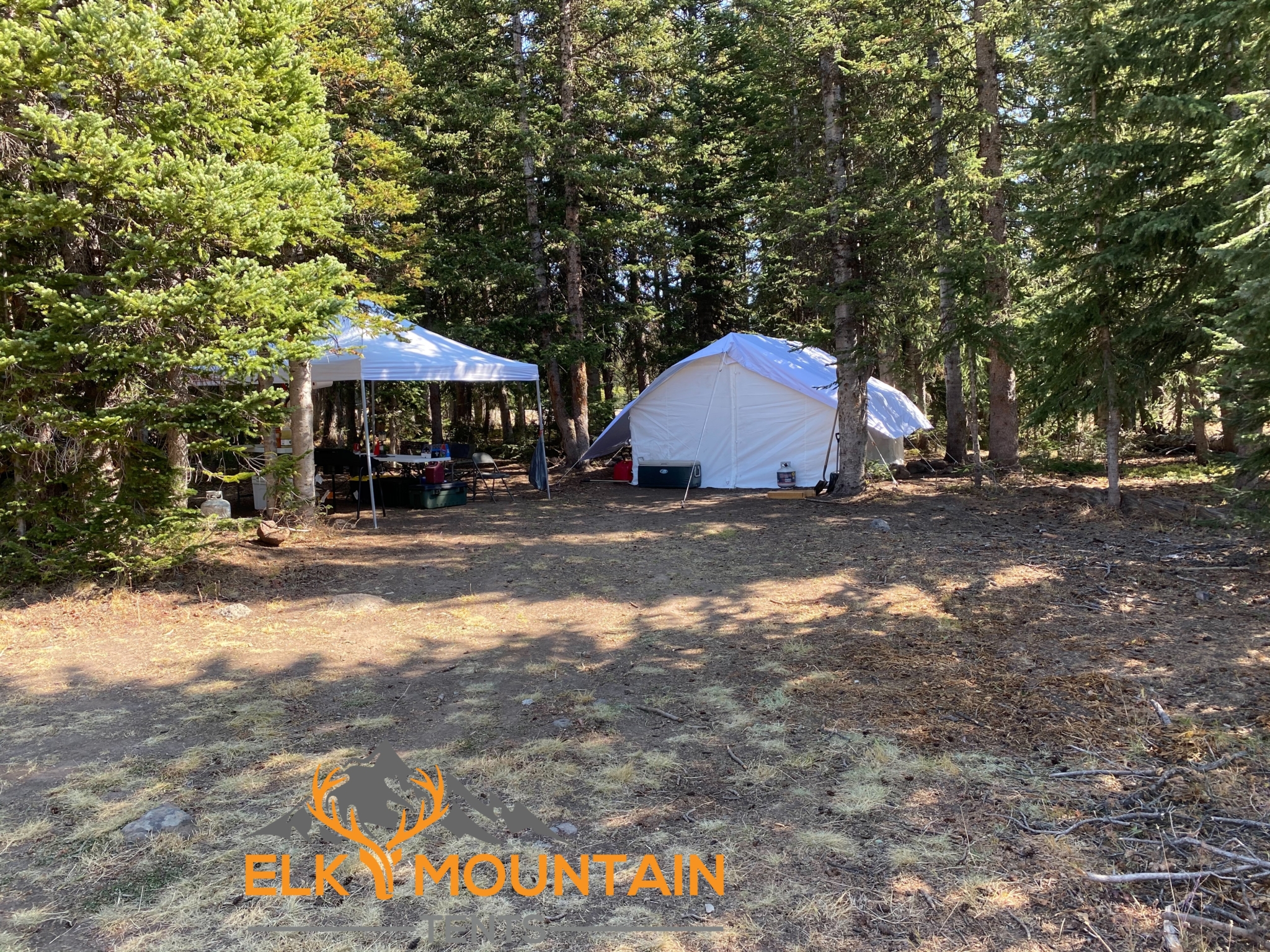 3-Season vs. 4-Season Tents
3-Season vs. 4-Season Tents
When you are looking for a tent to purchase, one of the biggest things to consider is the time (or times) of the year that you will be using it. If you are mostly a summer camper and the most you need to endure is occasional winds and light rain, you should be able to make do with a 3-season tent option, which is much lighter and more breathable. However, if you enjoy hunting or camping during the winter months, then you could benefit from a 4-season tent that is built to handle snow and heavy weather. Let’s have a look at what the differences are between these tents and the pros and cons of each.
The simple way to explain it is that a 4-season tent, as its name implies, can be used any time of year while 3-season tents aren’t great for winter use. There is certainly more to it than that, however. 3-season tents are much more versatile, thanks to their compactness and light weight, making them perfect for things like backpacking or casual camping during the warmer seasons of the year. The fabric in these tents is lighter, making it naturally more breathable. The frames of the tents themselves are also made of lighter material (usually aluminum) in addition to having a simpler pole setup, which isn’t the best during strong weather but can be nice and convenient when you need to transport the tent. It also makes setup and takedown easier. While the material that makes up a tent floor is heavier than that which makes up the walls, ultralight floors are becoming much more common, especially for backpacking tents. Other ways these tents reduce weight is by including clips that attach to the poles (also speeding up setup and takedown) or even allowing you to just use trekking poles to prop up the tent (a feature found in many modern backpacking tents).
3-season tents also usually have more mesh built-in, reducing possible condensation that could occur and offering better airflow. Most options have a double-wall structure, allowing you to remove the rainfly when the weather is nice so cool air can pass through. If your tent model has a vestibule (and/or side rain cover), it will typically be raised off the ground and allow air to pass through it. There is quite a bit of range in what constitutes a 3-season tent, as some are built to be as lightweight as possible for convenient hiking and backpacking, while others are sturdier and better for withstanding heavier rain and even some light snow (though anything more than that would require a 4-season). Which 3-season tent you decide to get might depend on whether you plan on camping in the backcountry more often or plan on just driving to a campground.

4-season tents are made to keep you safe and dry during even the toughest of weather, including extremely cold temperatures, stormy winds, and heavy snowfall. The fabric in these tents, while heavier, is much more durable, and the structure is made to withstand snow buildup. These tents aren’t as breathable as 3-season ones, in large part due to the lack of mesh, as their main goal is to keep you warm inside by using thicker nylon to trap your body heat inside and keep strong winds from being able to get in. That being said, some great 4-season options come with mesh windows that can be sealed shut when it starts to get cold outside. The frames of these tents are strong enough to handle snowfall and high winds as well, and while they are usually made of aluminum, it is a much thicker and more durable aluminum than that which you might find in a 3-season tent. This, as well as the much higher number of poles, makes setup and takedown a bit trickier than that of the lighter tents. The poles are also in more sections, which assists in durability but adds complications with setup, and more guy ropes need to be staked down.
Just like with 3-season tents, there is a large variety of different 4-season tents, including ones that feature snow flaps to keep cold air and snow from getting inside. While these tents are extremely fortified, they do sometimes have vents that can open up to prevent condensation and moisture buildup, which can often occur when you track snow inside. If your model doesn’t have vents, you may need to open up the doors or windows from time to time. This is something to consider since most 3-season tents have little to no condensation problems thanks to excellent ventilation throughout. 4-season tents are typically larger and roomier than 3-season options, in part so you will have more room to keep all your winter gear. To aid in that, you can usually find convenient things like gear pockets and additional doors. Some tents even come with large vestibules that can provide you with extra storage while still having plenty of room to set up your bed or sleeping bag. Vestibules and rainflies on 4-season tents usually extend to the ground to offer complete protection from the elements.
3-seasons are designed with convenience and minimal weight in mind (sacrificing durability and strength) while 4-seasons are designed to hold up against whatever comes up against it (sacrificing easy carry, setup, and takedown).

The bottom line is this: While 4-season tents are phenomenal in the winter, during the warmer months of the year you may want to opt for a 3-season because of its versatility and lighter weight. If you enjoy hunting during the colder times of the year, a 4-season tent is likely the best option for you, but if you are a hiker or backpacker (or a more casual camper) you should be able to have your needs met by a 3-season option. It all depends on what your individual needs are. If you are in a part of the world where winter doesn’t get too cold or snowy, you may be able to get away with using a 3-season tent year-round. You can compensate for less protection by purchasing a larger sleeping bag to help keep you warm. On the flip side of that, if the place you live snows during fall and spring as well as winter, a 4-season may not be a bad investment.
A 4-season tent is a great consideration if you take comfort in having a tent that you can count on no matter what it looks like outside. 4-season tents have the distinct advantage of constant reliability, which could be useful in the case of unexpected weather that can happen from time to time. A 4-season will make it so that change in weather won’t impede your plans. So, if that peace of mind is important to you, you may want to opt for one of these. If you are on a budget or simply don’t want to spend too much money on a tent, you may rather buy a 3-season.
Let’s take a look at one of the best and most popular 3-season tents currently on the market. The Big Agnes Copper Spur HV UL 2 is a spacious 2-person tent that is both extremely lightweight (at just 2 lbs. 12 oz.) and simple to set up. It makes for a great backpacking tent thanks to this as well as its compact size. Though backpacking tents aren’t the biggest tents you’ll find, this one is surprisingly roomy, offering more room for your head and shoulders and enough space for you to change clothes without too much difficulty. The 2-tone mesh provides you with needed privacy while still allowing you to look outside and stargaze if you wish. It is easy to get in and out of, even at night, thanks to its 2-door design and reflective guy ropes that you can’t miss, ensuring you won’t trip over them.

A great 4-season tent option is the canvas wall tent from Elk Mountain Tents. This tent comes in three sizes, 13 x 13, 13 x 16, and 13 x 20, each of which is large enough to fit a mid-sized group inside.
What makes this such a great 4-season tent is its unique polyester canvas material. Polyester canvas is just as breathable as cotton canvas but it won’t rot out when wet, making it a comfortable option in summer or winter. Of course, mold can grow on any surface, but the canvas itself is fully synthetic so there’s nothing to break down. The material is also stronger and more durable than cotton canvas, preventing possible tearing and holding up well against UV rays.
It comes with 4-6 mesh windows, depending on the size, that can help keep the tent well-ventilated. One of the biggest standouts of this tent is its inclusion of a stove jack, which allows you to put a wood stove inside. A wood stove is amazing to have during the winter or even during the chillier days and nights during the rest of the year.
There are plenty of high-quality tents out there, some better suited for winter, some for summer, and others that are great to use any time of year. Get the tent that will best fit your needs!
Sources:
https://www.msrgear.com/blog/3-season-vs-4-season-tent-which-is-right-for-you/




